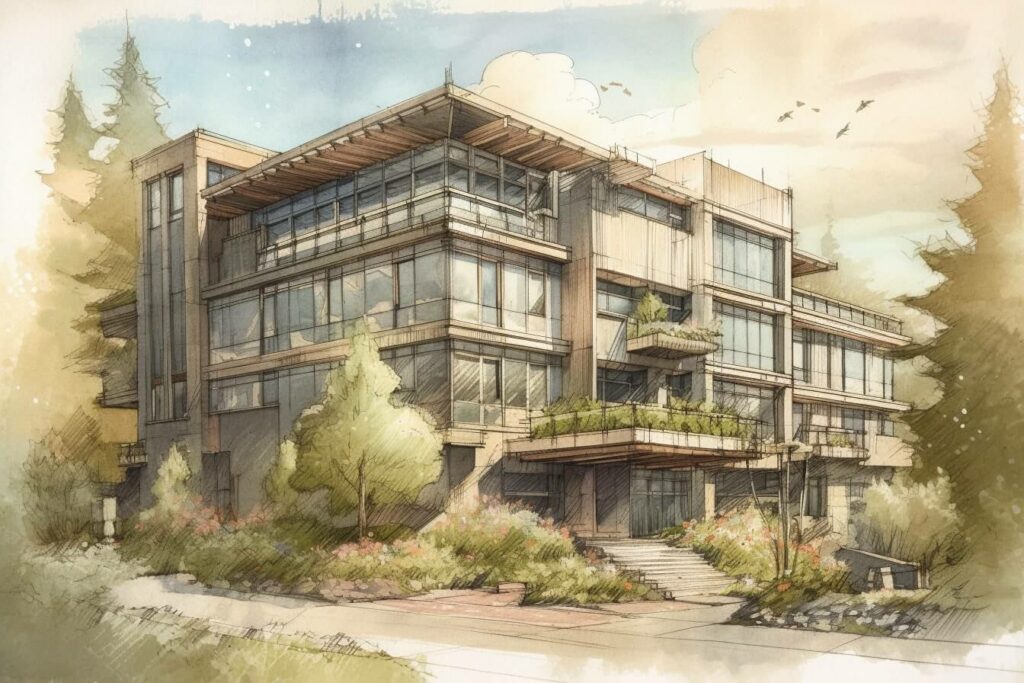
Embracing Sustainable Architecture: Trends for a Greener Future
Sustainable architecture is at the forefront of modern design, shaping the way we build and inhabit spaces. Explore the latest trends that exemplify a commitment to environmental responsibility and a vision for a greener future.
Integration of Renewable Energy Sources
One prominent trend in sustainable architecture is the integration of renewable energy sources into building designs. Solar panels, wind turbines, and geothermal systems are becoming integral components of eco-friendly structures. This shift towards renewable energy not only reduces dependence on traditional power sources but also minimizes the ecological footprint of buildings.
Passive Design Principles for Energy Efficiency
Passive design principles focus on optimizing a building’s natural features to enhance energy efficiency. This includes strategic positioning to maximize natural light, implementing proper insulation for temperature control, and utilizing natural ventilation systems. Sustainable architects are increasingly incorporating these passive design strategies to reduce the reliance on mechanical heating and cooling systems.
Green Roof and Vertical Gardens
Green roofs and vertical gardens are emerging as popular trends in sustainable architecture. These features not only enhance the aesthetic appeal of buildings but also contribute to environmental sustainability. Green roofs provide insulation, reduce heat absorption, and improve air quality, while vertical gardens offer a creative solution to urban green spaces, promoting biodiversity and mitigating the urban heat island effect.
Recycled and Upcycled Materials
The use of recycled and upcycled materials is a key trend in sustainable architecture, promoting resource conservation and waste reduction. Architects are creatively incorporating materials such as reclaimed wood, recycled steel, and repurposed glass into their designs. This not only minimizes the demand for new resources but also adds a unique character to sustainable buildings.
Emphasis on Water Conservation
Water scarcity is a global concern, and sustainable architecture is addressing this issue through innovative water conservation strategies. Rainwater harvesting systems, greywater reuse, and water-efficient fixtures are integral components of environmentally conscious building designs. These measures not only reduce water consumption but also contribute to the responsible use of this precious resource.
Smart Building Technologies
The integration of smart building technologies is revolutionizing sustainable architecture. Automated systems for lighting, heating, and cooling allow for precise control and optimization of energy usage. Additionally, sensors and monitoring systems help track energy consumption, providing valuable data for further efficiency improvements. Smart technologies contribute to the overall sustainability and functionality of modern buildings.
Biophilic Design for Human Well-being
Biophilic design, which emphasizes a connection with nature, is gaining prominence in sustainable architecture. Incorporating natural elements such as plants, natural light, and water features into building designs has been shown to enhance human well-being, productivity, and overall satisfaction. This approach aligns with the idea that sustainable buildings should prioritize the health and comfort of occupants.
Modular and Prefabricated Construction
Modular and prefabricated construction methods are gaining traction as sustainable alternatives to traditional building techniques. These approaches reduce construction waste, enable faster build times, and offer flexibility in design. Prefabricated components are often produced with efficiency in mind, optimizing material usage and minimizing environmental impact.
Certification and Standards for Sustainability
Architects and builders are increasingly adhering to sustainability certifications and standards to ensure that their projects meet established environmental benchmarks. Certifications such as LEED (Leadership in Energy and Environmental Design) and BREEAM (Building Research Establishment Environmental Assessment Method) set rigorous criteria for sustainable building practices, providing a framework for excellence in environmental performance.
Community-Centric Design for Social Impact
Sustainable architecture is extending its impact beyond individual buildings to focus on community-centric design. This trend emphasizes creating spaces that foster social interaction, inclusivity, and community well-being. Sustainable architects are actively engaging with local communities to understand their needs and incorporate design elements that contribute to the broader social fabric.
To stay informed about the latest Sustainable Architecture Trends, visit indidesignhome.my.id. Explore innovative designs and practices that promote environmental responsibility, shaping a greener and more sustainable future for architectural endeavors.




